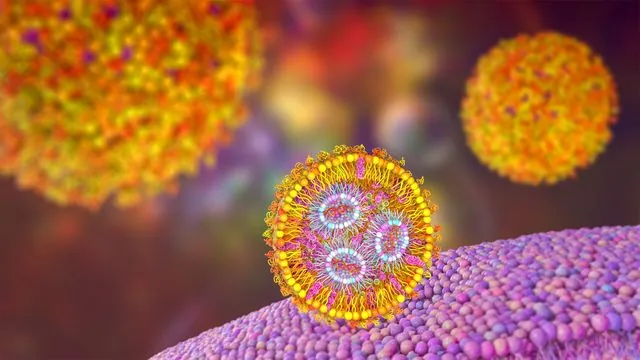
Revolutionary Upgrade to mRNA Vaccines Boosts Safety and Efficacy
2025-07-18
Author: Wei
Are you tired of experiencing inflammation after your mRNA vaccine doses? Imagine if those side effects could be completely avoided! A groundbreaking study from researchers at the University of Pennsylvania may have found a remarkable way to enhance the safety and effectiveness of mRNA vaccines.
A Game-Changing Discovery in Vaccine Technology
Published in the journal Nature Biomedical Engineering, this study reveals how a clever modification in the vaccine's structure leads to fewer side effects while amplifying its disease-fighting powers—including against COVID-19 and even cancer!
Phenolic Power: The Secret Ingredient
The magic ingredient? Phenol groups, which are naturally found in foods like olive oil and have well-established anti-inflammatory properties. Lead researcher Michael J. Mitchell, an Associate Professor in Bioengineering, shares, "By altering the recipe of our lipid nanoparticles (LNPs), we’ve created a solution that works better with fewer unwanted side effects. It’s truly a win-win!"
Reinventing the Lipid Recipe
Historically, the key component of LNPs—the ionizable lipids—were crafted using traditional methods that mix two ingredients. However, this research team looked back at a century-old chemical reaction, the Mannich reaction, which combines three components instead. This innovative twist allowed them to generate hundreds of novel lipids.
The Phenol Effect: Lower Inflammation, Higher Efficacy
Testing different lipid combinations, they found that those containing phenol compounds significantly diminished inflammation. The research uncovered that the top-performing lipid particle, created from phenol-enhanced ionizable lipids, resulted in less inflammation—proving to be a real game changer.
From Lab to Life: Real-World Impacts
Next, the researchers put the new C-a16 lipids to the test in real-world scenarios, delivering a gene that makes mice glow like fireflies. Results showed that the glow was an incredible 15 times brighter compared to existing delivery methods, promising astonishing implications for genetic therapies.
Cancer Treatment Redefined
In the realm of cancer research, results were equally impressive. Using the C-a16 lipids to treat melanoma, tumors shrank three times more effectively than with conventional LNPs from COVID-19 vaccines. Not just that—this new method enhanced the function of cancer-fighting T cells, making them more adept at recognizing and destroying tumors.
A Brave New Era for Vaccines
As exciting as it is to see these advances in cancer treatment, the C-a16 lipids also supercharged the immune response in animal models when used in COVID-19 vaccines, creating a response five times stronger than existing formulations!
Unlocking Future Possibilities
With this discovery, the team is excited to explore more overlooked chemical reactions like the Mannich reaction to unveil additional opportunities for enhancing mRNA vaccine technology. As Mitchell puts it, "Applying a century-old reaction to modern medicine could unlock countless possibilities for the future of healthcare. Who knows what other treasures remain to be rediscovered?"
This innovative leap not only holds the promise of safer and more effective vaccines but could ultimately transform our approach to treating a myriad of diseases.


 Brasil (PT)
Brasil (PT)
 Canada (EN)
Canada (EN)
 Chile (ES)
Chile (ES)
 Česko (CS)
Česko (CS)
 대한민국 (KO)
대한민국 (KO)
 España (ES)
España (ES)
 France (FR)
France (FR)
 Hong Kong (EN)
Hong Kong (EN)
 Italia (IT)
Italia (IT)
 日本 (JA)
日本 (JA)
 Magyarország (HU)
Magyarország (HU)
 Norge (NO)
Norge (NO)
 Polska (PL)
Polska (PL)
 Schweiz (DE)
Schweiz (DE)
 Singapore (EN)
Singapore (EN)
 Sverige (SV)
Sverige (SV)
 Suomi (FI)
Suomi (FI)
 Türkiye (TR)
Türkiye (TR)
 الإمارات العربية المتحدة (AR)
الإمارات العربية المتحدة (AR)